Balmorhea State Park
- January 24, 2024
- 0 comment
Discover Balmorhea State Park’s unique spring-fed pool and diverse wildlife in the heart of West Texas.Nestled in the arid landscape of West Texas, Balmorhea State Park emerges as an oasis of natural beauty and tranquility. Known for its crystal-clear spring-fed pool, the largest in the world, this park offers a unique blend of recreational and conservation activities. The waters, originating from the San Solomon Springs, maintain a year-round temperature of 72 to 76 degrees Fahrenheit, making it an ideal spot for swimming, snorkeling, and scuba diving.
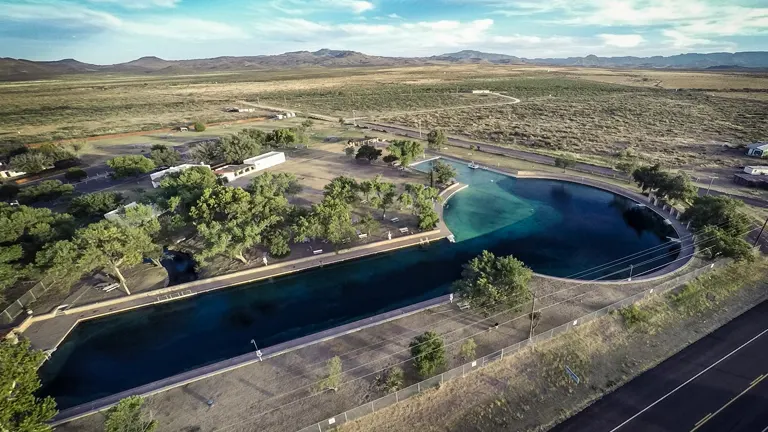
Beyond the pool, the park is steeped in rich history, dating back to the Civilian Conservation Corps’ work in the 1930s. Today, it serves as a habitat for various endangered and threatened species, including the Comanche Springs pupfish and the Pecos gambusia. Surrounded by desert, Balmorhea State Park stands as a testament to the unexpected and stunning diversity of the Texas landscape, drawing visitors from around the globe to experience its serene waters and vibrant ecosystem.
Characterizing Features of Balmorhea State Park
- World’s Largest Spring-fed Pool: Balmorhea State Park is home to the world’s largest spring-fed swimming pool. This impressive pool spans 1.3 acres and holds about 3.5 million gallons of water. Fed by the San Solomon Springs, the pool is a marvel of natural engineering, providing a constant flow of fresh water. This feature not only offers a unique swimming experience but also supports an aquatic ecosystem that is rare in the desert environment.
- Constant Water Temperature: One of the most remarkable aspects of the pool is its consistent water temperature, ranging between 72 to 76 °F year-round. This temperature stability is due to the continuous flow from the springs, making the pool a perfect spot for swimming, snorkeling, and scuba diving in any season. This constant warmth also plays a crucial role in maintaining the delicate balance of the aquatic ecosystem within the park.
- Diverse Ecosystem Supported by Springs: The San Solomon Springs are the lifeblood of Balmorhea State Park, creating an ecosystem that stands in stark contrast to the surrounding desert. These springs not only feed the pool but also support a variety of aquatic life, including several endangered species. The presence of these springs has led to the development of wetland areas, or cienegas, which are critical habitats for wildlife and contribute to the park’s biodiversity.
- Historic CCC Constructions: The park’s facilities, including the pool, were primarily built by the Civilian Conservation Corps (CCC) during the 1930s. These structures are not only functional but also have historical significance, reflecting the architectural style and craftsmanship of that era. The CCC’s work is a testament to the era’s dedication to creating public recreational spaces during challenging economic times.
- Birdwatching and Wildlife Observation Opportunities: Balmorhea State Park is a haven for birdwatchers and wildlife enthusiasts. The combination of water, wetlands, and desert environments attracts a diverse array of bird species, making it an ideal spot for observation. Additionally, the park’s commitment to preserving its natural habitat allows visitors to experience the local fauna in its natural setting.
History of Balmorhea State Park
The history of Balmorhea State Park begins in the 1930s, a time when America was grappling with the Great Depression. The Texas State Parks Board, recognizing the potential of the San Solomon Springs, acquired the land in 1934. This move was part of a broader effort to provide employment through public works projects. The Civilian Conservation Corps (CCC), a key New Deal program, was instrumental in developing the park. They embarked on an ambitious project to construct the now-famous spring-fed swimming pool, along with other facilities like bathhouses and the San Solomon Springs Courts. Their work, completed between 1934 and 1941, was not just about creating recreational space; it was about crafting an oasis in the midst of the arid West Texas landscape.
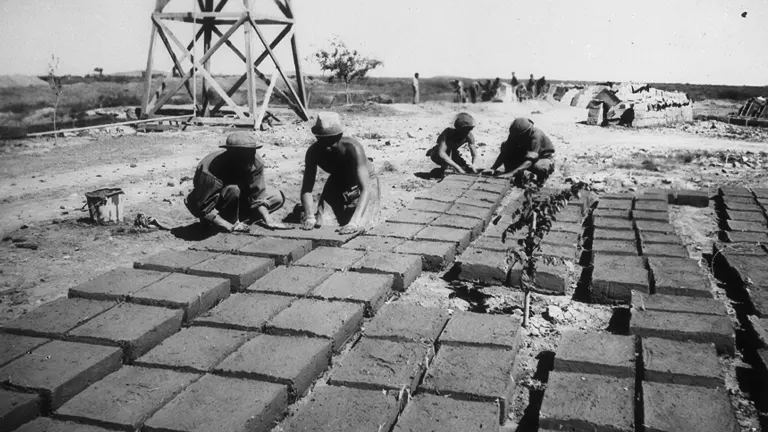
Transforming into a state park in 1968, Balmorhea has since been a cherished destination. Over the years, it has undergone various improvements and restorations, including significant work on the pool and facilities to preserve its historic charm and ecological significance. The park’s evolution reflects a commitment to conserving the natural beauty of the springs while providing a unique recreational area for visitors. Today, Balmorhea State Park stands as a testament to the enduring legacy of the CCC and the transformative power of conservation efforts in the heart of the Texas desert.
Unique Ecosystem of Balmorhea State Park
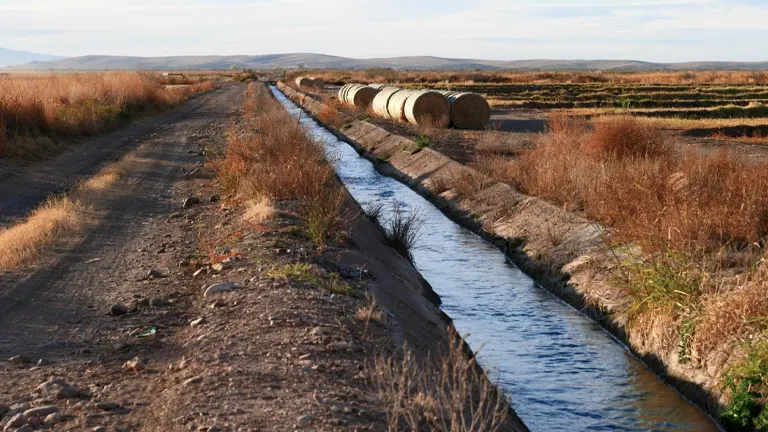
Balmorhea State Park is renowned for its extraordinary ecosystem, centering around the San Solomon Springs. This natural oasis supports a diverse range of life in an otherwise arid environment. The park’s most notable feature, the spring-fed pool, provides a habitat for several endangered species, including the Comanche Springs pupfish and the Pecos gambusia. The surrounding wetlands, known as cienegas, have been carefully restored to protect these species and offer a rare glimpse into a vibrant aquatic ecosystem. The constant influx of fresh spring water creates an ideal environment for a variety of aquatic plants and animals, making the park a unique convergence of desert and wetland ecosystems. This rich biodiversity not only attracts wildlife enthusiasts but also highlights the park’s role in conservation and environmental education.
Unique Location of Balmorhea State Park

Balmorhea State Park, a remarkable natural sanctuary, is uniquely situated in the high desert region of West Texas. This exceptional location contributes to its distinct character and allure. The park lies at the crossroads of various ecological zones, resulting in a rare and rich blend of desert and aquatic ecosystems. It is particularly notable for the San Solomon Springs, a natural spring system that emerges in stark contrast to the surrounding arid desert landscape. This spring provides a continuous flow of fresh, clear water, creating the renowned spring-fed pool, an oasis in the desert. Additionally, the park’s proximity to the Davis Mountains adds to its scenic beauty and offers a cooler, more temperate climate than the surrounding desert plains. This unique geographic setting not only makes Balmorhea State Park a haven for a diverse range of wildlife but also a captivating destination for visitors seeking a blend of desert serenity and aquatic refreshment.
The Importance of Conservation and Recreation in Balmorhea State Park
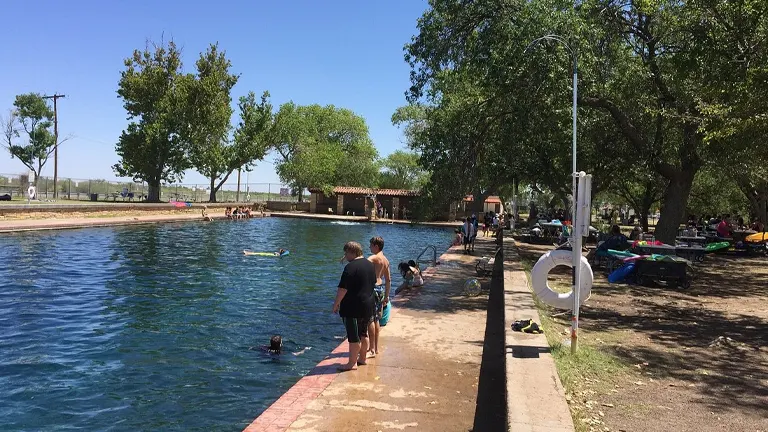
Balmorhea State Park serves as a crucial example of the harmonious balance between conservation and recreation. At its core, the park’s conservation efforts are vital for protecting the unique and delicate ecosystem centered around the San Solomon Springs. These efforts ensure the survival of endangered species like the Comanche Springs pupfish and the Pecos gambusia, while maintaining the natural purity of the spring waters. On the recreational side, the park offers a variety of activities that are both enjoyable and respectful of its natural resources. From swimming in the crystal-clear waters of the pool to exploring the restored cienegas, the park provides a space where people can connect with nature and unwind. This dual focus on conservation and recreation not only enhances the visitor experience but also plays a significant role in educating the public about the importance of preserving natural habitats. In essence, Balmorhea State Park stands as a testament to the idea that recreational areas can coexist with, and even enhance, environmental conservation efforts.
Diverse Vegetation and Plant Species in Balmorhea State Park
- Cottonwood Trees (Populus deltoides): These majestic trees are a defining feature around the water bodies in Balmorhea State Park. They provide essential shade and contribute to the lush, green landscape contrasting with the surrounding desert. Cottonwoods are crucial for supporting local bird populations and other wildlife.
- Cattails (Typha): Commonly found in the wetland areas of the park, cattails play a significant role in the ecosystem. They are vital for water filtration and provide habitat for various aquatic species. Their presence is indicative of the health of the wetland ecosystem.
- Texas Madrone (Arbutus xalapensis): This eye-catching tree, with its distinctive red, peeling bark, is a unique addition to the park’s flora. The Texas Madrone is adapted to the arid conditions of West Texas and adds to the park’s botanical diversity.
- Big Bend Silverleaf (Leucophyllum frutescens): This native shrub, characterized by its silvery foliage and purple flowers, thrives in the desert climate. It’s a hardy plant that adds color and beauty to the arid landscape of the park.
- Desert Willow (Chilopsis linearis): This small tree or large shrub is known for its beautiful, trumpet-shaped flowers and long, narrow leaves. The Desert Willow is well-adapted to the hot, dry environment and is an important nectar source for local hummingbirds and bees.
- Blue Grama Grass (Bouteloua gracilis): A dominant grass species in the park, Blue Grama is resilient and thrives in the desert conditions. It’s crucial for preventing soil erosion and provides forage for wildlife.
- Prickly Pear Cactus (Opuntia): Common in the desert areas of the park, these cacti are not only iconic to the landscape but also serve as a food source for wildlife. Their flowers add a splash of color to the scenery.

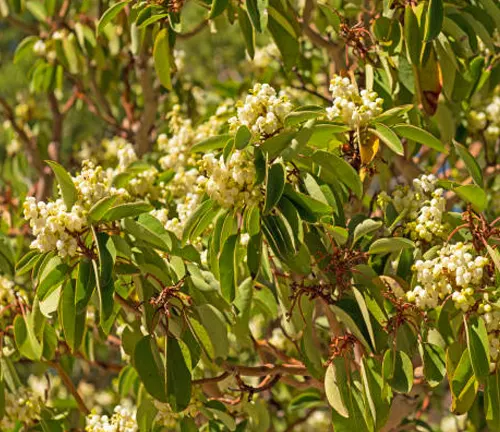
Fauna in Balmorhea State Park
- Comanche Springs Pupfish (Cyprinodon elegans): This small, vibrant fish is endemic to the region and thrives in the clear waters of the San Solomon Springs. The Comanche Springs Pupfish is a symbol of the park’s successful conservation efforts, as it is listed as an endangered species due to its limited habitat.
- Pecos Gambusia (Gambusia nobilis): Another endangered species, the Pecos Gambusia, is a small, resilient fish that plays a crucial role in the aquatic ecosystem. Their presence in the park’s waters is a significant indicator of the health and purity of the spring-fed habitats.
- Mexican Free-tailed Bat (Tadarida brasiliensis): These bats are a common sight in the park, especially around dusk. They play a vital role in insect control, making them an essential part of the park’s ecological balance.
- Painted Turtle (Chrysemys picta): Often seen basking on rocks or logs near the water, the Painted Turtle adds to the park’s aquatic diversity. These turtles are a delightful sight for visitors and are an important part of the local food web.
- Great Blue Heron (Ardea herodias): This majestic bird is often spotted in the wetlands of the park. The Great Blue Heron is a top predator in the aquatic food chain and is known for its striking appearance and impressive wingspan.
- Golden Eagle (Aquila chrysaetos): Occasionally seen soaring high above the park, the Golden Eagle is a symbol of the wild and unspoiled nature of the area. These birds of prey are a testament to the park’s robust and healthy ecosystem.
- Black-tailed Jackrabbit (Lepus californicus): Common in the desert areas of the park, these rabbits are known for their long ears and fast running speed. They play a key role in the food chain, serving as prey for larger predators.
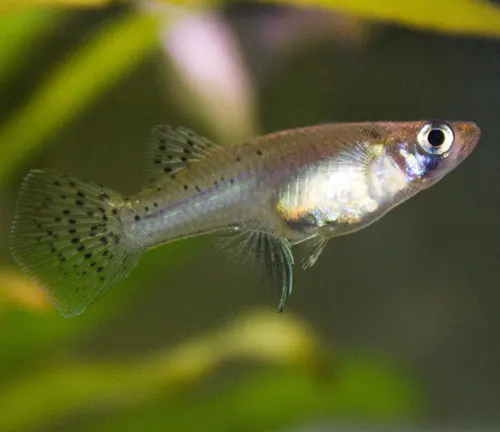
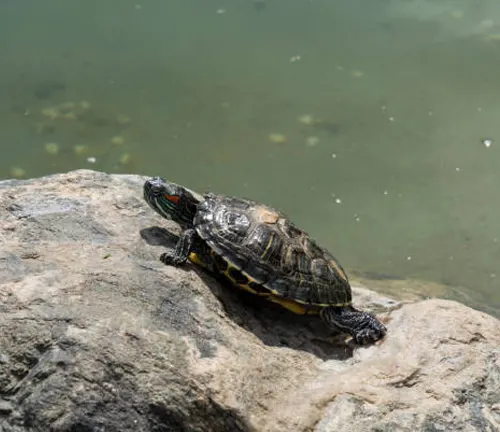
Attractions in Balmorhea State Park
The Spring-Fed Pool: Balmorhea State Park’s centerpiece is its massive spring-fed pool, renowned for being the largest of its kind in the world. This pool, covering 1.3 acres and filled with 3.5 million gallons of crystal-clear water, offers a unique swimming experience. Fed by the San Solomon Springs, it maintains a constant temperature range of 72 to 76 °F, making it ideal for swimming, snorkeling, and scuba diving year-round.
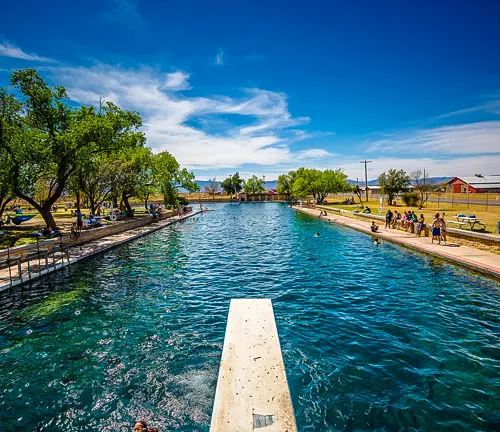
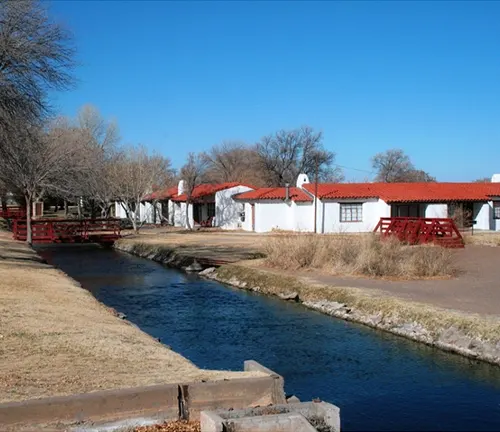
San Solomon Springs Courts: These historic courts offer visitors a chance to stay overnight in buildings constructed by the Civilian Conservation Corps in the 1930s. The courts provide a blend of historical charm and modern convenience, allowing guests to immerse themselves in the park’s history while enjoying its natural beauty.
Cienegas (Desert Wetlands): The restored desert wetlands in the park are a crucial habitat for endangered species like the Comanche Springs pupfish and the Pecos gambusia. These wetlands offer a unique opportunity for visitors to observe and learn about the delicate balance of this aquatic ecosystem within the desert.
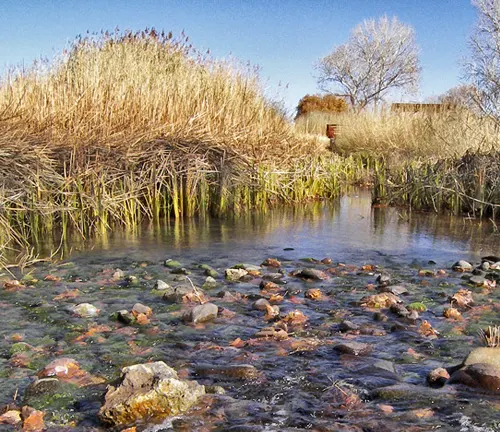

Picnic Areas and Playground: The park is equipped with picnic areas and a playground, making it an excellent destination for family outings. These facilities allow visitors to relax and enjoy a meal amidst the natural beauty of the park.
Nature and History Programs: Ranger-led programs on the nature and history of the park provide educational and engaging experiences. These programs are designed to enhance the understanding and appreciation of the park’s unique ecosystem and its historical significance.

Recreational Activities in Balmorhea State Park
- Swimming in the Spring-Fed Pool: The park’s main attraction is its enormous spring-fed pool, ideal for swimming. This natural pool, constantly fed by the San Solomon Springs, offers crystal-clear waters with a steady temperature, making it a perfect spot for a refreshing swim. The pool’s size and depth vary, accommodating swimmers of all skill levels.
- Scuba Diving and Snorkeling: Unique for a state park, Balmorhea offers scuba diving and snorkeling opportunities in its spring-fed pool. The clear waters provide excellent visibility for exploring underwater life. Divers and snorkelers can enjoy a rare experience of observing fish and aquatic plants up close in a natural setting.
- Wildlife Viewing and Bird Watching: The park’s diverse habitats make it a prime location for wildlife viewing and bird watching. The cienegas, or wetlands, and the surrounding desert areas host a variety of bird species, offering enthusiasts a chance to spot both local and migratory birds.
- Hiking and Nature Trails: For those who enjoy land-based activities, the park offers trails perfect for hiking and exploring the desert landscape. These trails provide an opportunity to experience the natural beauty of the area, observe local flora and fauna, and enjoy the tranquility of the desert.
- Geocaching: Geocaching, a modern outdoor treasure-hunting game, is a popular activity in the park. Participants use GPS coordinates to find hidden caches, making it a fun and adventurous way to explore the park’s landscapes.
- Picnicking: The park has several picnic areas, ideal for family gatherings or a quiet meal in nature. These areas offer a relaxing environment to enjoy the scenic beauty of the park while dining outdoors.
- Educational Programs: Balmorhea State Park offers various educational programs, including ranger-led tours and talks. These programs provide insights into the park’s history, ecology, and the importance of conservation, enhancing the overall visitor experience.
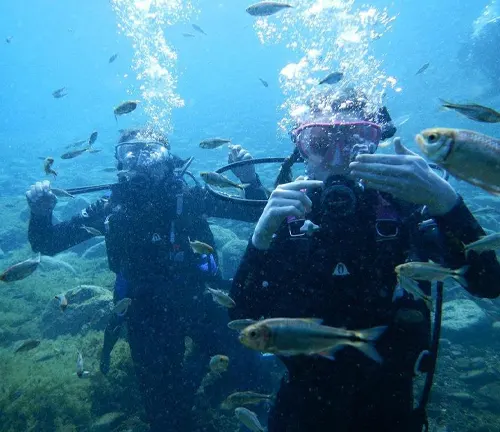
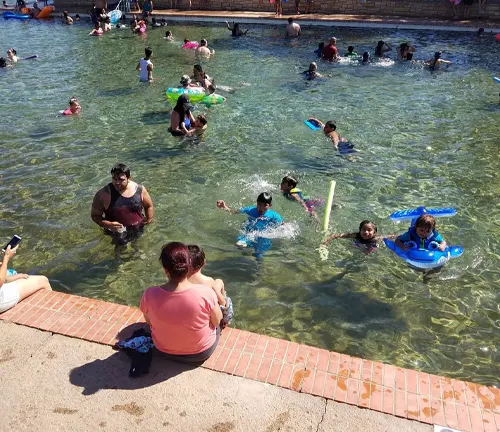
Different Facilities and Amenities in Balmorhea State Park
- Spring-Fed Swimming Pool: The park’s most famous facility is its large, spring-fed swimming pool. This pool, known for its crystal-clear water, offers a unique swimming experience due to the natural source of its water. It’s a central spot for relaxation and recreation, accommodating swimmers, snorkelers, and scuba divers.
- San Solomon Springs Courts: For overnight stays, the park offers the San Solomon Springs Courts. These are historic, motel-style accommodations built by the Civilian Conservation Corps in the 1930s. They provide a charming and rustic lodging experience for visitors wanting to stay within the park.
- Campgrounds and RV Sites: Balmorhea State Park features well-maintained campgrounds and RV sites. These facilities are equipped to handle both tents and recreational vehicles, offering visitors a chance to stay amidst the natural beauty of the park.
- Picnic Areas: Scattered throughout the park, picnic areas provide a perfect setting for family outings or a peaceful meal in the great outdoors. These areas are equipped with tables and, in some cases, grilling facilities, making them ideal for day visitors.
- Nature Trails: The park boasts several nature trails, allowing visitors to explore the unique desert landscape. These trails are suitable for all ages and provide a great opportunity to view local wildlife and vegetation.
- Playground and Sports Area: For families with children, the park offers a playground and a sports area. These facilities provide a fun and safe environment for children to play and engage in physical activities.
- Park Store: The on-site park store offers a variety of items, including swimming and snorkeling accessories, souvenirs, and basic necessities. It’s a convenient spot for visitors to pick up anything they might need during their stay.
- Ranger Station and Park Headquarters: The ranger station and park headquarters are crucial for visitor orientation and assistance. Here, guests can find park maps, informational brochures, and learn about the park’s history and wildlife.
Tips and Advice for Visiting Balmorhea State Park
- Plan Your Visit in Advance: Due to its popularity, especially during peak seasons, it’s advisable to plan your visit to Balmorhea State Park in advance. This includes booking accommodations if you plan to stay overnight. The park’s unique attractions can draw crowds, so having a plan ensures a smoother and more enjoyable visit.
- Check Pool Availability: The spring-fed pool is a major attraction and can sometimes be closed for maintenance or due to capacity limits. Before your visit, check the park’s official website or contact the park office to ensure the pool is open to avoid any disappointment.
- Respect Wildlife and Natural Surroundings: Balmorhea State Park is home to several endangered species and delicate ecosystems. Visitors are encouraged to enjoy these natural wonders while maintaining a respectful distance from wildlife and adhering to park rules to protect these habitats.
- Stay Hydrated and Prepared for the Sun: The park is located in a desert region, which means it can get quite hot, especially in the summer months. It’s important to stay hydrated and use sun protection, including sunscreen, hats, and sunglasses. Bringing ample water is crucial, as the heat can be more intense than expected.
- Bring Appropriate Gear for Water Activities: If you plan to swim, snorkel, or scuba dive in the park’s pool, bring the necessary equipment. While some items might be available at the park store, having your own gear ensures you are prepared for your activities.
- Explore Beyond the Pool: While the spring-fed pool is a highlight, Balmorhea State Park offers much more. Take time to explore the trails, watch for wildlife, and visit the cienegas. These activities offer a fuller experience of the park’s diverse environment.
- Follow All Park Guidelines: Adhering to park guidelines ensures not only your safety but also the preservation of the park’s natural beauty. This includes rules about camping, fires, pet policies, and conservation practices.
- Be Mindful of the Local Community: Balmorhea State Park is situated near a small community. Visitors are encouraged to be considerate by supporting local businesses and respecting the town’s residents and culture.
Recommendation
Balmorhea State Park is a must-visit gem in West Texas, offering the rare delight of swimming in the world’s largest spring-fed pool. With its crystal-clear waters, diverse wildlife, and scenic trails, it’s an ideal escape for nature lovers and adventure seekers. Don’t miss the chance to experience this unique oasis in the desert!
Conclusion
Balmorhea State Park is a true oasis in the West Texas desert, offering a unique blend of natural beauty, recreational activities, and conservation. Its famous spring-fed pool and diverse wildlife make it a must-visit for nature enthusiasts and those seeking a peaceful retreat. This park not only provides a refreshing escape but also plays a vital role in environmental preservation, embodying the spirit of natural wonder and ecological responsibility.
FAQs
- What is special about the pool at Balmorhea State Park?
The pool at Balmorhea State Park is the world’s largest spring-fed swimming pool. Fed by the San Solomon Springs, it covers 1.3 acres and maintains a year-round temperature of 72-76°F, making it perfect for swimming, snorkeling, and scuba diving. - Can I stay overnight at Balmorhea State Park?
Yes, the park offers overnight accommodations. You can reserve a room at the San Solomon Springs Courts, historic motel-style lodging, or choose from 34 campsites for tents and RVs. - Are there any opportunities for wildlife viewing in the park?
Absolutely! The park’s cienegas, or wetlands, are home to endangered species like the Comanche Springs pupfish and Pecos gambusia. The park is also a great spot for bird watching, with various species frequenting the area. - Is Balmorhea State Park suitable for family visits?
Yes, the park is family-friendly, with a playground, picnic areas, and a safe swimming environment. However, children under 15 must be supervised by an adult in the pool area. - Are there any hiking trails in Balmorhea State Park?
While Balmorhea is more known for its water activities, there are opportunities for short hikes around the park, offering a chance to explore the desert landscape and local flora and fauna. - Do I need to bring my own equipment for water activities?
While it’s recommended to bring your own snorkeling or scuba gear, the park store does offer some swimming and snorkeling accessories for sale. - What conservation efforts are in place at Balmorhea State Park?
The park focuses on preserving its unique ecosystem. Efforts include protecting endangered species, maintaining the cienegas, and educational programs about the importance of conservation. - Is there a best time of year to visit the park?
Balmorhea State Park is open year-round, but the best time to visit is between spring and fall to fully enjoy the water activities. Summer can be quite hot, so be prepared for the heat if you visit during that season.
Balmorhea State Park is a true oasis, offering a refreshing and unique experience in the Texas desert. It’s a place where nature’s beauty and tranquility are yours to explore. Visit, relax, and create lasting memories in this remarkable natural haven.



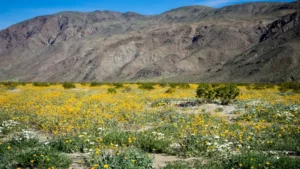


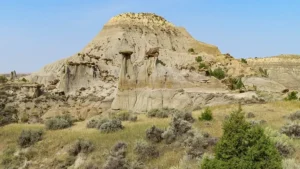

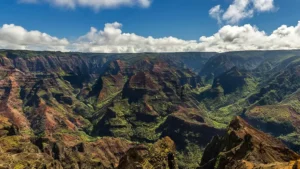
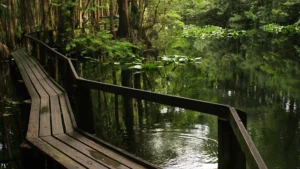
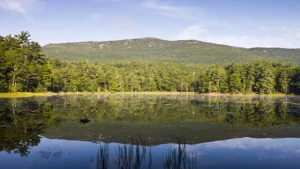
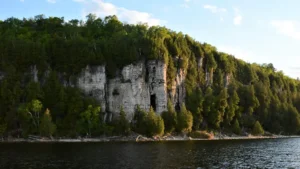

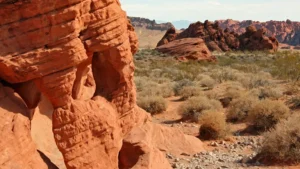
Leave your comment